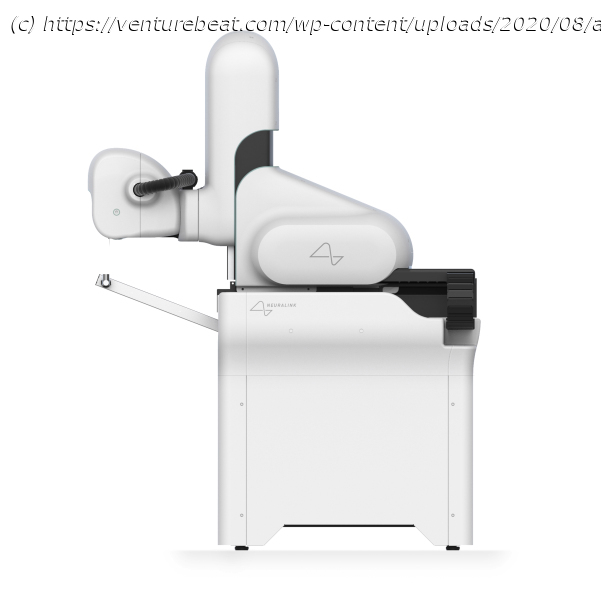During a press conference held online, Elon Musks Neuralink gave a progress update on its ambitious brain-machine interface research.
During a press conference held virtually this afternoon, scientists at Elon Musk’s Neuralink gave a progress update. It came just over a year after the company, which was founded in 2016 with the goal of creating brain-machine interfaces, first revealed to the world its vision, software, and implantable hardware platform. Little of what was discussed today was surprising or necessarily unanticipated, but it provided assurances the pandemic hasn’t prevented Neuralink from inching toward its ambitious goals. Neuralink’s prototype can extract real-time information from many neurons at once. During a live demo, Neuralink showed readings from a pig’s brain; when the pig touched an object with its snout, neurons captured by Neuralink’s technology fired in a visualization on a TV monitor. That isn’t novel in and of itself — Kernel and Paradromics are among the many outfits developing under-skull brain-reading chips — but Neuralink uniquely leverages flexible cellophane-like conductive wires inserted into tissue using a “sewing machine.” Neuralink says it received a Breakthrough Device designation in July and it’s working with the FDA on a future clinical trial with people suffering from paraplegia. It is the work of founding Neuralink members from the University of California Tim Hanson and Philip Sabes along with University of California, Berkeley professor Michel Maharbiz, and the version demonstrated today is an improvement over what was shown last year. Musk calls it “V2,” and he’s confident it’ll someday take less than an hour to embed within a human brain. He also says it’ll be easy to remove and leave no lasting damage, should a patient wish to upgrade or discard Neuralink’s interface. Neuralink collaborated with Woke Studios, a creative design consultancy based in San Francisco, on the design of the sewing machine. Woke began working with Neuralink over a year ago on a behind-the-ear concept that Neuralink presented in 2019, and the two re-engaged shortly after for the surgical robot. According to Woke head designer Afshin Mehin, machine is capable of seeing the entirety of the brain. “The design process was a close collaboration between our design team at Woke Studios, the technologists at Neuralink, and prestigious surgical consultants who could advise on the procedure itself,” Mehin told VentureBeat. “Our role specifically was to take the existing technology that can perform the procedure, and hold that against the advice from our medical advisors as well as medical standards for this type of equipment, in order to create a non-intimidating robot that could perform the brain implantation.” The machine consists of three parts. There’s a “head,” which houses automated surgical tools and brain-scanning cameras and sensors, against which a patient situates their skull. First, a device removes a portion of skull, and a device replaces the portion of skull that was removed. Then, computer vision algorithms guide a needle containing 5-micron-thick bundles of wires and insulation six millimeters into the brain, avoiding blood vessels. (Neuralink says the machine is technically capable of drilling to arbitrary lengths.) The wires — which measure a quarter of the diameter of a human hair (4 to 6 μm) — link to a series of electrodes at different locations and depths.
Home
United States
USA — software Neuralink demonstrates its next-generation brain-machine interface






